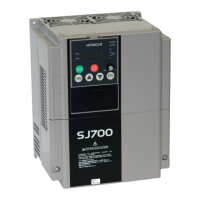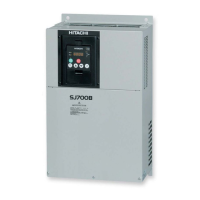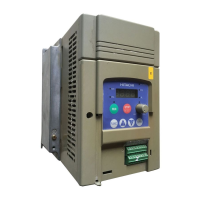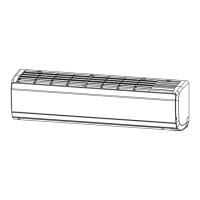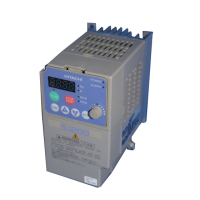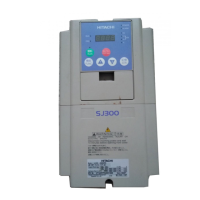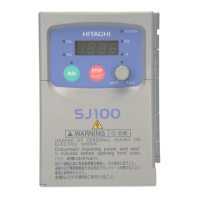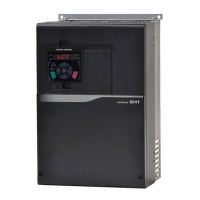Chapter 4 Explanation of Functions
4-15
(2) Start/end frequency settings for the O2-L terminal
Setting of the start frequency
Setting of the end frequency
Setting of the rate of the start frequency to
the external frequency command (-10 to
+10 V) (*1)
Setting of the rate of the end frequency to
the external frequency command (-10 to
+10 V) (*1)
*1 The frequency rates correspond to the voltages (-10 to +10
V) of the external frequency command as follows:
-10 to 0 V: -100% to 0%
0 to +10 V: 0% to 100%
For example, if the voltage of the signal to be input to the O2-L
terminal is -5 to +5 V, specify 50% for "A114".
4.2.15 External analog input (O/OI/O2) filter setting
The external analog input filter setting function allows you to set the
input-voltage/input-current sampling time to be applied when frequency
commands are input as external analog signals.
You can use this filter function effectively for removing noise from the frequency-setting circuit signal.
If the noise disables the stable operation of the inverter, increase the setting. Setting a larger value makes the inverter
response slower. The filtering constant is "set value (1 to 30) x 2 ms."
When the setting is "31" (factory setting), a hysteresis of ±0.1 Hz is added to the filtering constant (500 ms).
External frequency filter
time const.
Setting of 1. to 30.: "Set value x 2" ms filter
Setting of 31.: 500 ms filter (fixed) with hysteresis of
±0.1 Hz
4.2.16 V/f gain setting
The V/f gain setting function allows you to change the inverter output voltage by
specifying the rate of the output voltage to the voltage (100%) selected with the
AVR voltage select function (A082).
If the motor operation is cranky, try to increase the gain setting.
Setting of the rate of reducing the output voltage
Maximum frequency for
forward operation
Maximum frequency for
reverse operation
A045: V/f gain setting
A082: AVR voltage select
AVR voltage
select
(100%)
A016: External frequency filter
time const.
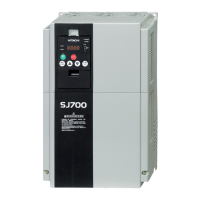
